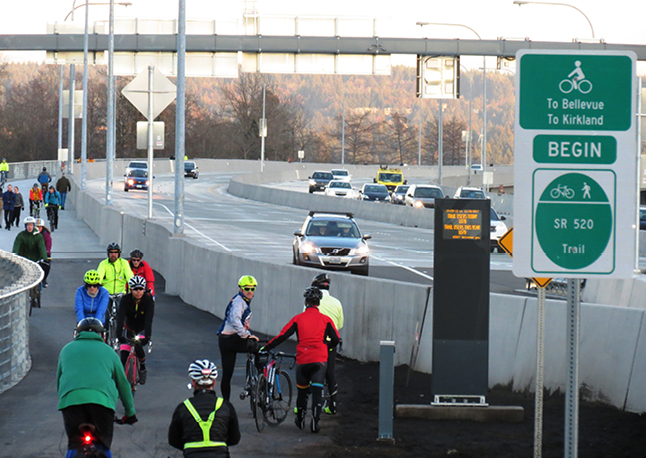In planning today’s transportation infrastructure, we are collecting more data than ever. But the true transformation comes when we act on the insights from that data. That is why probe data, the real-time tracking of vehicle movement through GPS, connected devices and telematics, is one of the most important tools reshaping how we manage, maintain, and optimize public infrastructure.
In partnership with transportation technology vendors like Flow Labs, STV’s team is working with agencies like the Washington State Department of Transportation (WSDOT) to realize both the promise and the pain points of integrating probe data into agency operations. What’s clear right now is that probe data is no longer an experimental technology. It is a strategic enabler – and its value grows exponentially when paired with expertise and trust.
Just a few years ago, probe data was limited by low penetration rates – aka the measure of the percentage of vehicles in traffic flow that are contributing data to a probe data system. These metrics were reliable enough for long-range planning, but not accurate enough for day-to-day traffic management. That is changed. Thanks to modern connected vehicle networks, we are now seeing real-time penetration rates between 20% and 35%, and in some instances, capturing data from up to 48% of vehicles on the road.
Culture, Contracts, and the Role of the Private Sector
In Washington State, the shift to probe data has been a slower burn – not because of the tech, but because of the legacy infrastructure and institutional complexity. With hundreds of thousands of detection points statewide and decades of investment in loops, signals and in-house systems, change does not happen overnight.
But here is where we are making headway: embracing a partnership model. At STV, we have brought in Flow Labs not just as a data provider, but as an embedded expert. Their team will be working alongside public agency engineers to troubleshoot problems, answer questions and build confidence in the data. This is not a vendor relationship, it is a collaboration. And it is changing the game.
Breaking Through the Barriers
Many public agencies want to adopt probe data but face real hurdles. These include:
- Funding silos that prevent bundling purchases across divisions
- Cultural attachment to in-house systems and personnel
- Procurement rigidity that favors legacy compliance
- Skepticism fueled by past under-deliveries (“promised 10% penetration, got 1%”)
These challenges are real, but they are not insurmountable. The key is starting small – validate probe data against known loop locations; use it in low-infrastructure areas where traditional sensors do not reach; layer it with ground truth. And build from there.
The Bigger Picture: National Goals, Local Wins
The U.S. Department of Transportation is signaling a clear direction: reduce reliance on hardware-heavy systems owned, operated, and maintained by public agencies and embrace the private sector as a trusted extension of agency staff. Programs like the Roadway Digital Infrastructure initiative and the National Operations Center of Excellence’s technical exchanges are setting the foundation and sharing best practices for interoperable, corridor-wide strategies built on scalable data.
These initiatives are producing results in areas like:
- Truck parking insights from GPS-based freight data
- Complete Streets validation for intersection redesigns
- Wrong way driving detection, congestion relief, safety analytics and more.
- Emerging National Operations Data Exchange frameworks are enabling scalable, real-time coordination across jurisdictions and data systems—public and private alike
A New Operating Model
We are at a turning point. Agencies no longer need to own every piece of hardware to understand how their networks are performing. Probe data offers an efficient and scalable alternative. It gives small cities big-city capabilities. It enables statewide, interstate, and multijurisdictional coordination and situational awareness without statewide infrastructure. It empowers engineers to focus on insights, not sensors.
But the shift only works if we change the model.
We are encouraging our public sector clients to not just buy data but to build partnerships. Embed this expertise and open access across teams, consultants and jurisdictions. Let the data flow – and let your decisions evolve. This is not about replacing what you have. It is about unlocking what is next.








